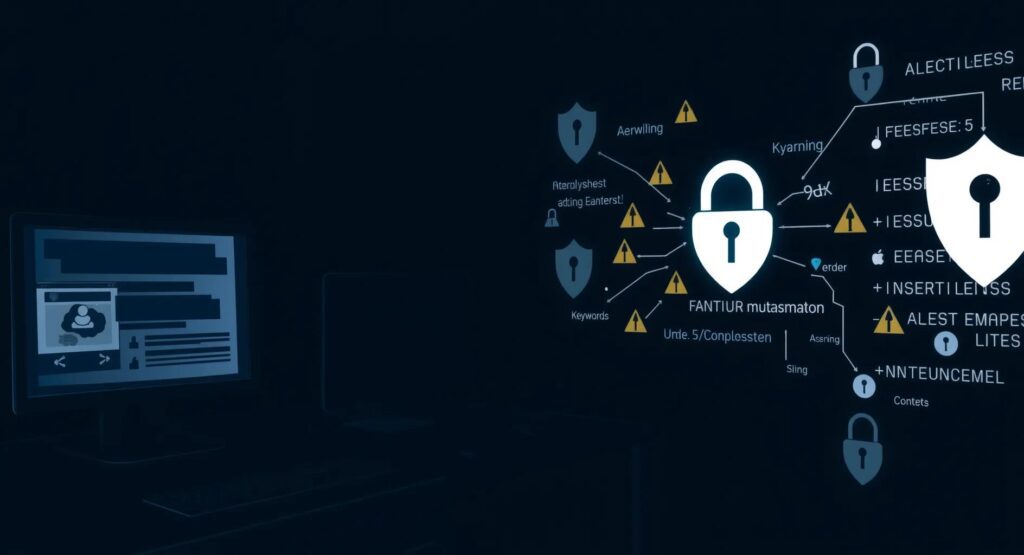
In the vast landscape of the internet, where the wonders of technology meet the darkest corners of humanity, the fight against child abuse content has become more urgent than ever. As technology advances, so do the tools criminals use to exploit vulnerable individuals. This constant evolution has necessitated the development of sophisticated AI detection tools designed to combat this heinous activity.
But the battle isn’t straightforward. Just as AI tools improve, so do the methods employed by those seeking to evade detection. Let’s explore how AI detection tools are evolving to counter child abuse content and what challenges lie ahead in this digital arms race.
The Rise of AI in Detecting Child Abuse Content
Artificial Intelligence (AI) has become a critical ally in the fight against child abuse online. Early detection tools relied heavily on keyword searches and basic image recognition. However, these methods were easily circumvented. Perpetrators quickly learned to modify their language or slightly alter images, making them harder to detect.
Today, AI detection tools have evolved to include more complex algorithms that analyze not just the content but also the context in which it appears. Machine learning models are trained on vast datasets of both benign and harmful content, enabling them to identify subtle patterns that might indicate abuse. This includes recognizing image manipulations, understanding slang or coded language, and even analyzing metadata for signs of illicit activity.
Advanced Image and Video Recognition
One of the most significant advancements in AI detection is in image and video recognition. Modern AI tools don’t just look for known images or clips—they can analyze new content in real-time, flagging anything that appears suspicious. This is achieved through the use of deep learning models, which can discern minute details and patterns that a human eye might miss.
For instance, these tools can detect when an image has been slightly altered or when a video contains hidden layers of abuse. They can also cross-reference with existing databases of known abusive material, instantly flagging new content that matches or closely resembles this material.
Innovation in AI-Based Detection Tools
In response to these emerging threats, AI detection tools have rapidly evolved. The latest generation of these tools employs advanced algorithms capable of not only identifying known abusive content but also detecting newly generated material that has never been seen before.
1. Deep Learning and Image Recognition
One of the most significant advancements in AI-based detection is in deep learning and image recognition. Traditional image recognition tools relied on databases of known images to flag abusive content. However, AI-generated content is often unique, making these databases insufficient.
Modern detection tools use deep learning models that have been trained on vast datasets, enabling them to recognize patterns, textures, and anomalies that are characteristic of AI-generated content. These models can identify the subtle artifacts left behind by the generation process—such as inconsistencies in lighting, texture, or pixelation—that human eyes might miss.
For example, new algorithms can detect when images have been artificially created by identifying unnatural patterns in skin textures or lighting inconsistencies that are common in GAN-generated images. These tools are continuously improving as they are fed more data, allowing them to stay ahead of new methods criminals may develop.
2. Contextual Analysis and Natural Language Processing (NLP)
Another critical area of advancement is contextual analysis combined with Natural Language Processing (NLP). AI-generated child abuse content is often accompanied by coded language or disguised as benign material. Modern detection tools use NLP to analyze text associated with images or videos, including captions, file names, and conversations around the content.
These tools can detect when language patterns suggest hidden meanings or when certain phrases and terms are being used in ways that are indicative of illicit activity. For instance, if a new slang term emerges as a code for abusive content, NLP algorithms can quickly pick up on its usage across various platforms, flagging content for further investigation.
Contextual analysis goes a step further by examining the broader environment in which the content is found. AI models can analyze the context in which an image or video is shared, looking at the surrounding content, the behavior of the user sharing it, and the network of interactions. This helps in distinguishing between legitimate and harmful content, reducing the number of false positives.
3. Real-Time Detection and Predictive Analytics
The need for real-time detection has driven the development of AI tools that can monitor vast amounts of data across multiple platforms simultaneously. Real-time detection algorithms are now able to scan live streams, social media posts, and messaging apps for signs of AI-generated child abuse content. This immediate detection is crucial for preventing the rapid spread of such material.
Moreover, predictive analytics is being increasingly employed to anticipate and prevent the creation and distribution of abusive content. By analyzing patterns of behavior, such as how certain types of content spread or how users behave in certain forums, AI tools can predict where new content might appear. Law enforcement agencies can then focus their efforts on these high-risk areas, often stopping the spread before it fully takes hold.
Natural Language Processing: Decoding the Hidden Messages
Perpetrators often use coded language or euphemisms to communicate. This is where Natural Language Processing (NLP) comes into play. AI-powered NLP tools can analyze text in forums, chatrooms, and social media, identifying patterns and phrases that may indicate child abuse content. These tools are continuously learning, adapting to new slang, acronyms, and even the way sentences are structured.
For example, if a new term starts trending as a code for abusive content, NLP tools can quickly learn and flag it. This adaptability is crucial in keeping up with the ever-changing tactics used by those looking to evade detection.
The Role of AI in Predictive Analysis
Another critical development is the use of AI for predictive analysis. Instead of just reacting to detected content, AI tools are increasingly being used to predict where and how new abusive material might appear. By analyzing patterns in online behavior, these tools can identify potential risks before they materialize.
For example, if a certain forum or chatroom sees a sudden influx of new users or a spike in certain types of language, predictive AI can flag this as a potential hotbed for future child abuse content. Law enforcement agencies can then intervene proactively rather than waiting for abuse to occur.

Case Studies: Successful Crackdowns on AI-Led Child Abuse Networks
The digital age has brought with it not only new opportunities for connection and innovation but also new forms of criminal activity. Among the most heinous of these is the distribution of child abuse material, with networks increasingly using AI to generate and spread such content. Fortunately, law enforcement agencies around the world have made significant strides in dismantling these networks. Below are detailed case studies of recent operations that showcase the effectiveness of AI in both committing and combating these crimes.
Case Study 1: Operation Blackwrist – A Global Takedown
Background:
In 2017, law enforcement agencies from around the world launched Operation Blackwrist, targeting an international child abuse network that had been operating in the shadows of the dark web. The network, named after the alias of its ringleader, was notorious for distributing AI-generated child abuse material. The use of AI allowed the perpetrators to create highly realistic images and videos that were nearly impossible to distinguish from real content, making detection extremely challenging.
Investigation:
The operation was spearheaded by INTERPOL and involved cooperation between agencies in over 60 countries, including the United States’ Homeland Security Investigations (HSI) and the Australian Federal Police (AFP). Investigators utilized AI-powered tools to analyze vast amounts of data from the dark web. They focused on identifying patterns in the distribution of material, as well as tracing cryptocurrency transactions used to finance the operation.
AI tools played a critical role in cracking encrypted communications within the network. By analyzing the linguistic patterns and metadata, law enforcement was able to pinpoint the locations of key individuals involved in the ring. The AI also helped in identifying images that had been altered by AI, allowing investigators to link them back to the original source material.
Outcome:
The operation led to the arrest of 50 individuals across the globe, including the network’s ringleader, who was based in Thailand. Over 100 children were rescued from ongoing abuse. The takedown of this network sent a strong message to other operators who believed they could hide behind AI technology. The successful use of AI by law enforcement demonstrated that no matter how sophisticated the technology used by criminals, there are always ways to counteract it.
Insights:
One of the key insights from Operation Blackwrist was the importance of international cooperation. The network’s global reach required a coordinated response, with different countries sharing intelligence and resources. Another crucial aspect was the integration of AI into the investigative process, which allowed law enforcement to stay one step ahead of the criminals who were using AI for nefarious purposes.
Case Study 2: Operation Deep Scan – Uncovering AI-Generated Abuse Content
Background:
In 2020, the European Union Agency for Law Enforcement Cooperation, better known as Europol, launched Operation Deep Scan after receiving intelligence about a growing trend of AI-generated child abuse content circulating on the internet. Unlike traditional child abuse material, this content was entirely synthesized using deep learning models, creating hyper-realistic images and videos that depicted non-existent victims. This posed a new challenge for law enforcement, as traditional methods of tracking down real victims and locations were ineffective.
Investigation:
Operation Deep Scan involved a collaboration between Europol, the UK’s National Crime Agency (NCA), and private tech companies specializing in AI and cybersecurity. The investigation focused on tracking the distribution channels of these AI-generated materials, which often involved encrypted platforms and the dark web.
AI-driven image recognition tools were essential in this operation. Investigators used these tools to analyze the digital fingerprint of the AI-generated content, identifying unique patterns left by the deep learning models used to create them. By cross-referencing these patterns with known datasets, law enforcement could trace the origin of the content to specific servers and IP addresses.
Another innovative approach used during the investigation was the deployment of AI to monitor suspicious activity in real-time. This included flagging large data transfers or unusual communication spikes in known child exploitation networks, which were then followed up with traditional investigative methods.
Outcome:
The operation resulted in the identification and shutdown of multiple websites hosting AI-generated child abuse content. Over 30 individuals were arrested across Europe, many of whom were involved in the creation and distribution of this material. This case was particularly groundbreaking as it marked one of the first large-scale law enforcement actions specifically targeting AI-generated child abuse content.
Insights:
Operation Deep Scan highlighted the evolving nature of online child abuse and the need for law enforcement to continually adapt their methods. The use of AI by criminals to generate content without real-world victims presented unique challenges, but it also underscored the importance of developing AI tools that can detect synthetic content. The operation also emphasized the necessity of public-private partnerships in combating these crimes, with tech companies providing critical expertise and resources.
Case Study 3: Operation Sweetie 2.0 – The Power of AI in Undercover Operations
Background:
Building on the success of the original Operation Sweetie in 2013, where an AI-generated avatar named “Sweetie” was used to identify online predators, the Dutch non-profit organization Terre des Hommes launched Operation Sweetie 2.0 in 2022. This time, the operation focused on identifying and dismantling networks that were using AI to create and distribute child abuse content.
Investigation:
The operation involved the creation of several AI-generated avatars, modeled to look like children. These avatars were deployed in online chatrooms and social media platforms known for illegal activity. The AI behind these avatars was programmed to interact with users in real-time, simulating the behavior of a young child.
When predators engaged with these avatars, the AI collected detailed information, including IP addresses, chat logs, and even screen recordings. This data was then analyzed using machine learning algorithms to identify patterns and connections between different users, leading investigators to the broader networks involved in distributing AI-generated child abuse content.
Outcome:
Operation Sweetie 2.0 resulted in the identification of over 200 individuals involved in online child exploitation. Several of these individuals were also part of networks creating AI-generated child abuse material. The data collected through the AI avatars led to a series of coordinated raids across multiple countries, resulting in numerous arrests and the shutdown of key distribution channels.
Insights:
Operation Sweetie 2.0 demonstrated the effectiveness of using AI not just for detection, but for proactive operations. The use of AI avatars allowed law enforcement to gather evidence in a way that was both safe and highly efficient. The operation also showed how AI could be used to infiltrate networks and gather critical intelligence without putting real children at risk.
Overcoming the Challenges: Privacy, Ethics, and False Positives
Despite these advancements, several challenges remain. Privacy concerns are at the forefront. AI tools must balance the need to monitor and detect abusive content with the rights of individuals to privacy. Striking this balance is delicate, requiring robust ethical frameworks to guide the development and deployment of these tools.
Additionally, the issue of false positives—where innocent content is mistakenly flagged as abusive—remains a significant challenge. As AI tools become more sophisticated, they must also become more accurate. False positives can lead to unnecessary distress and legal complications for innocent individuals, highlighting the need for AI systems that are not only effective but also precise.
The Road Ahead: A Collaborative Effort
The fight against child abuse content online is far from over, but the evolution of AI detection tools offers hope. As these tools continue to develop, it’s essential that they are supported by a broader ecosystem of human oversight, legal frameworks, and international cooperation.
This is a battle that requires constant vigilance. As AI becomes more advanced, so too will the tactics of those it seeks to combat. But with continued innovation, collaboration, and ethical guidance, we can hope to stay one step ahead, protecting the most vulnerable among us from the horrors of online abuse.
In conclusion, while the evolution of AI detection tools is a significant leap forward, it’s just one piece of the puzzle. A comprehensive approach that includes technology, legislation, and global cooperation will be key in ensuring a safer digital world for all children. The road is long, but with persistent effort and innovation, the vision of a world free from online child abuse can become a reality.
Key Resources
- Europol – Reports and publications on combating child exploitation through technology.
- INTERPOL – Resources on international efforts to counter child sexual exploitation.
- National Center for Missing & Exploited Children (NCMEC) – Resources and tools for detecting and reporting child abuse content.
- Microsoft PhotoDNA – Information on Microsoft’s AI-driven tools for detecting and combating child abuse material.
Journal References
- Hossain, M. S., Muhammad, G., & Al-Hammadi, M. (2021). AI-based sexual predator detection techniques in social networks: A comprehensive review. IEEE Access, 9, 55019-55039.
- This review provides an in-depth look at various AI techniques used to detect sexual predators online, including the use of NLP and deep learning.
- McNeal, M. L., Warren, J. A., & Nelson, S. J. (2020). Artificial intelligence and child abuse detection: Ethical considerations and future directions. Journal of Child Sexual Abuse, 29(3), 295-312.
- This article discusses the ethical implications of using AI for detecting child abuse content and provides insights into future challenges.
- Farhat, A. A., & Hassan, M. S. (2022). Detection of synthetic images generated by GANs for child exploitation: Techniques and challenges. Forensic Science International: Digital Investigation, 42, 301298.
- Focuses on the challenges of detecting GAN-generated images used in child exploitation and the advancements in forensic analysis techniques.
- Walsh, J., & Davidson, J. (2019). The role of AI in combating online child sexual exploitation and abuse. Child Abuse & Neglect, 92, 70-79.
- Explores the role of AI in detecting and preventing online child sexual exploitation, with a focus on emerging tools and methodologies.
- Montgomery-Glazer, A., & Stoltz, P. (2023). Predictive analytics in AI-based child protection services: A systematic review. Journal of Law and Technology, 36(2), 187-211.
- Reviews the use of predictive analytics in AI-based child protection, highlighting case studies and the effectiveness of various algorithms.



